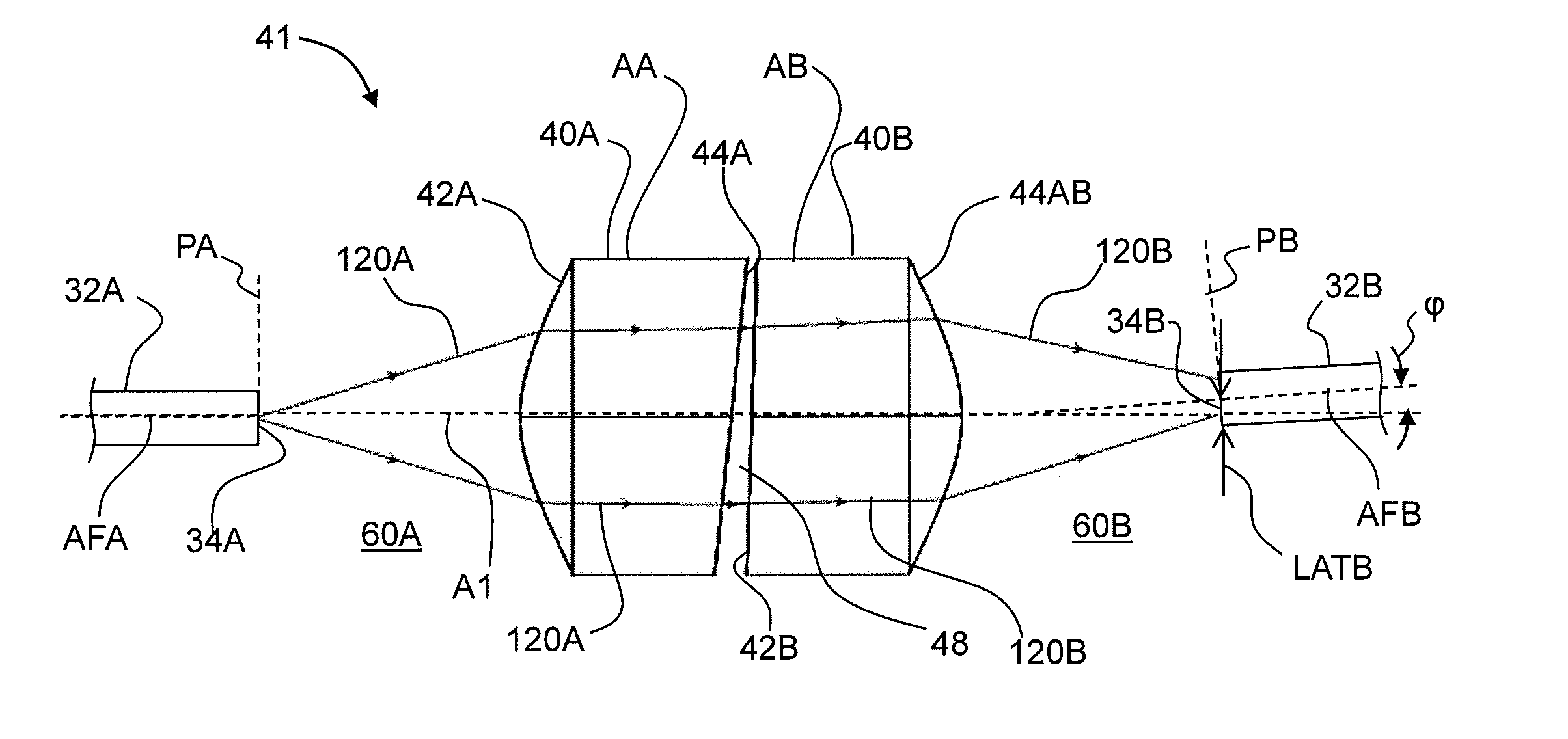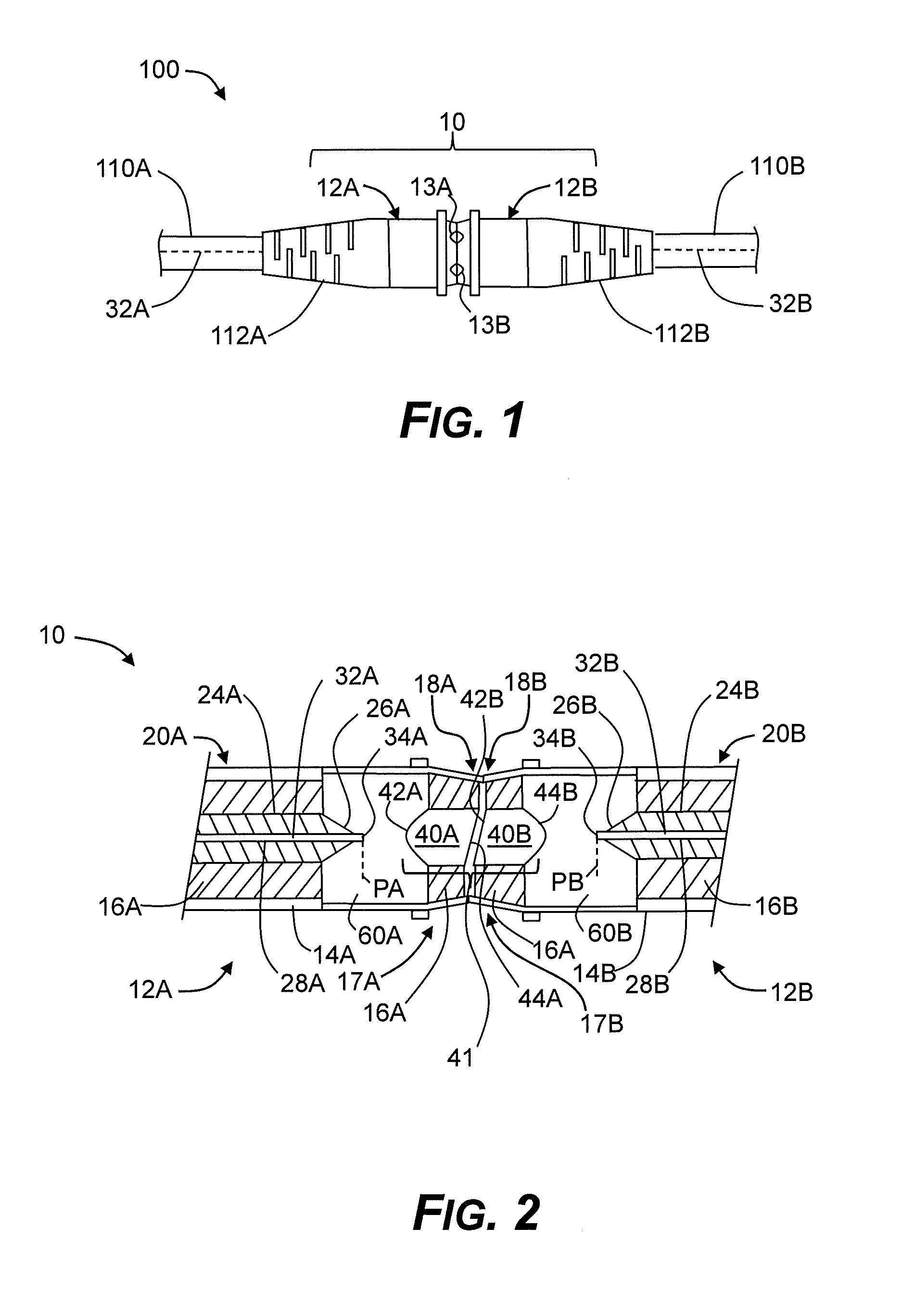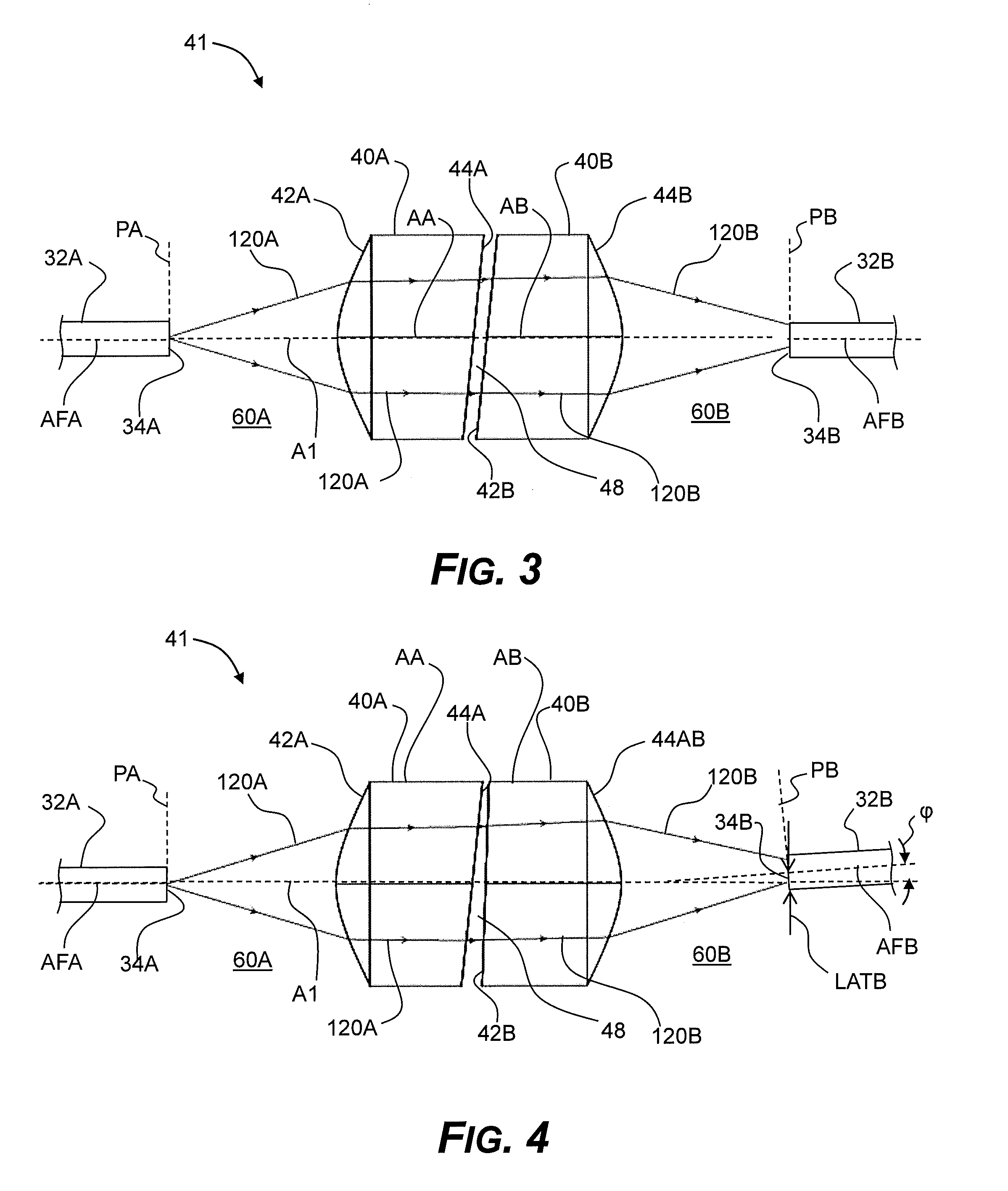Optical connector with lenses having opposing angled planar surfaces
a technology of optical connectors and planar surfaces, applied in the field of optical connectors, can solve the problems of connectors not substantially reducing the performance of optical connectors, not suitable for consumer electronic devices, and not intended for the relatively large number of mating cycles normally associated with consumer electronic devices
- Summary
- Abstract
- Description
- Claims
- Application Information
AI Technical Summary
Problems solved by technology
Method used
Image
Examples
Embodiment Construction
[0032]FIG. 1 is a side view of an example connector assembly 100 that includes an optical connector 10 according to the present disclosure. FIG. 2 is a close-up, longitudinal cross-sectional view of an example optical connector 10 of the connector assembly of FIG. 1. Optical connector 10 includes first and second mating connector members 12A and 12B having a similar (but not necessarily identical) structure. For ease of description, connector member 12A is referred to herein as “plug 12A” and connector member 12B is referred to as “receptacle 12B.” Note that this terminology is a matter of choice and can be reversed. Also, in the Figures, light travels left to right unless indicated otherwise.
[0033]Connector assembly 100 includes plug and receptacle fiber optic cables 110A and 110B that are respectively connected to plug 12A and receptacle 12B of optical connector 10. Plug and receptacle fiber optic cables 110A and 110B respectively carry at least one plug optical fiber 32A and at l...
PUM
 Login to View More
Login to View More Abstract
Description
Claims
Application Information
 Login to View More
Login to View More - R&D
- Intellectual Property
- Life Sciences
- Materials
- Tech Scout
- Unparalleled Data Quality
- Higher Quality Content
- 60% Fewer Hallucinations
Browse by: Latest US Patents, China's latest patents, Technical Efficacy Thesaurus, Application Domain, Technology Topic, Popular Technical Reports.
© 2025 PatSnap. All rights reserved.Legal|Privacy policy|Modern Slavery Act Transparency Statement|Sitemap|About US| Contact US: help@patsnap.com



